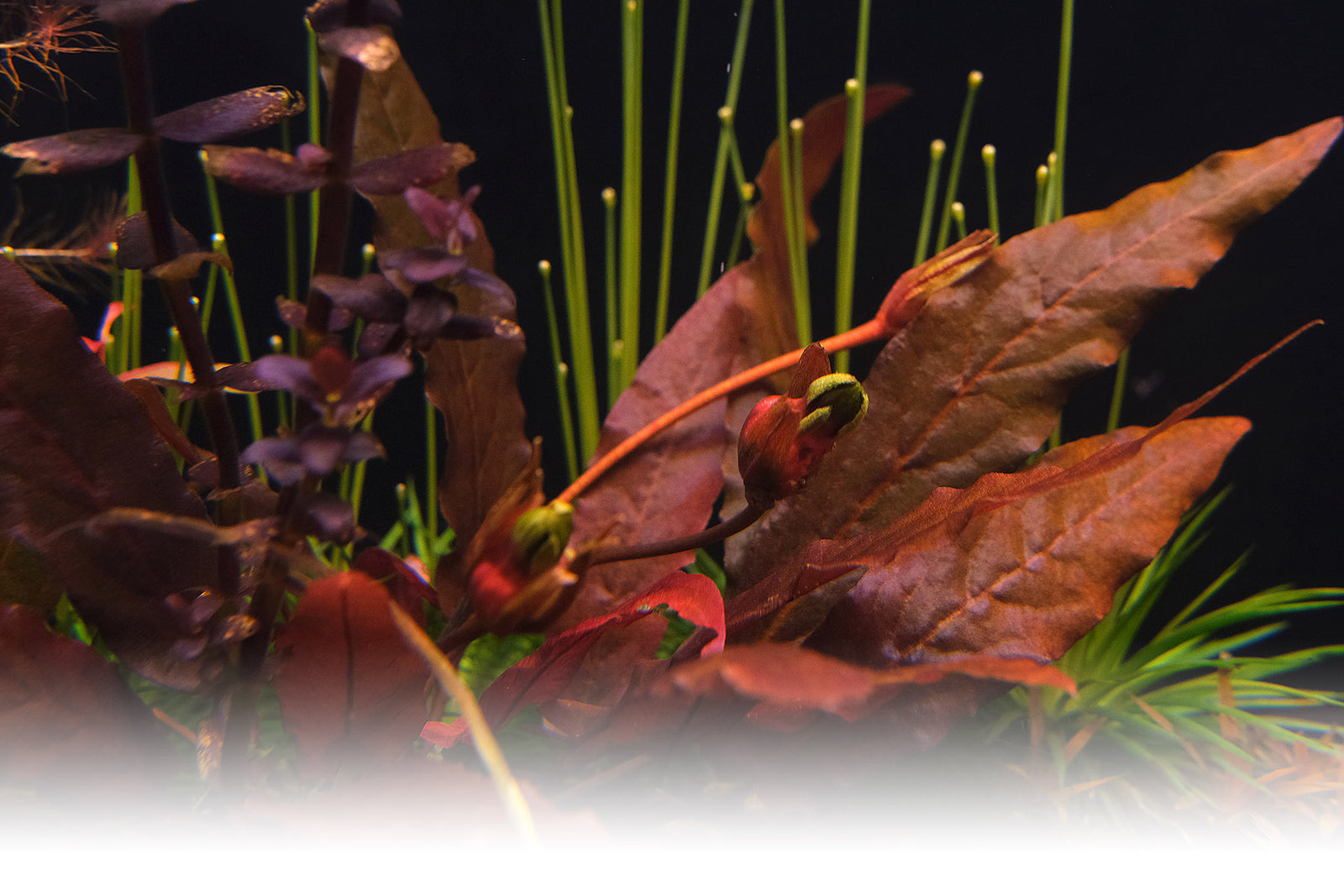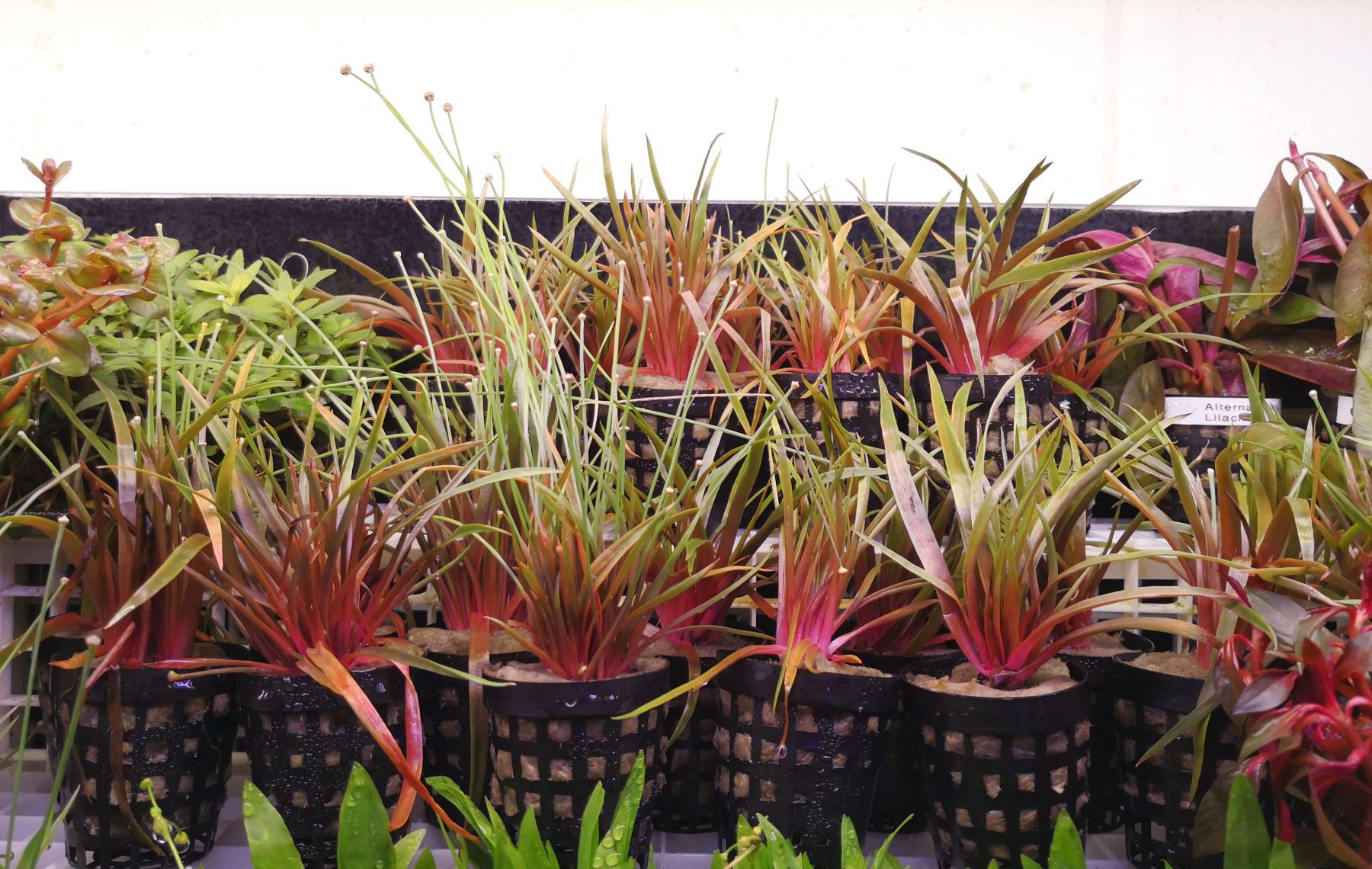
Underwater Flowers?
Most commercially traded aquatic plants flower above water.
Some however readily blossom underwater. Above, we see the buds and florets of Barclaya longifolia (the red plant). In the background are the flower stalks of Eriocaulon cinereum (the taller green stalks with white tips).
The majority of commercially traded aquatic plants are species that can grow both above (emersed) and below water (submerged). For most of these species, flowering usually only occurs above water, when the plant detects access to air. Plants may send out flower stalks that penetrate the water surface, or in the case of stem plants, grow tall enough to rise above the water level before flowering occurs. Insects and wind are the main pollinators in nature.
Pollination through water (hydrophily) occurs in very few aquatic plants; certain Ceratophyllum and Najas species are able to do this. For these plants, the pollen floats in water to hit another plant.
However, some species regularly flower underwater, such as Bucephalandra (see below).
These flowers are non-functional and deteriorate quickly underwater. However, for a few days they can look amazingly decorative.
But be careful
Plants flowering underwater may also be triggered by stress or other drastic changes in tank parameters (light, temperature etc). So the appearance of flowers is not always a symbol of beaming health!
In the case of Eriocaulons, the flower stalks for some species such as the E. cinereum above signal the end of life cycle for the plant. In this scenario, the plant should have been split-propagated to induce spawning of babies (check out the page on propagating Eriocaulons) before the flowering cycle. Pulling out the flower stalks could delay the effect, as it forces the plant to channel energy to leaf rather than flower growth.
Above: The taller green shoots with whitish balls at their ends are the flower stalks of Eriocaulon quinquangulare. This species occasionally flowers underwater.

